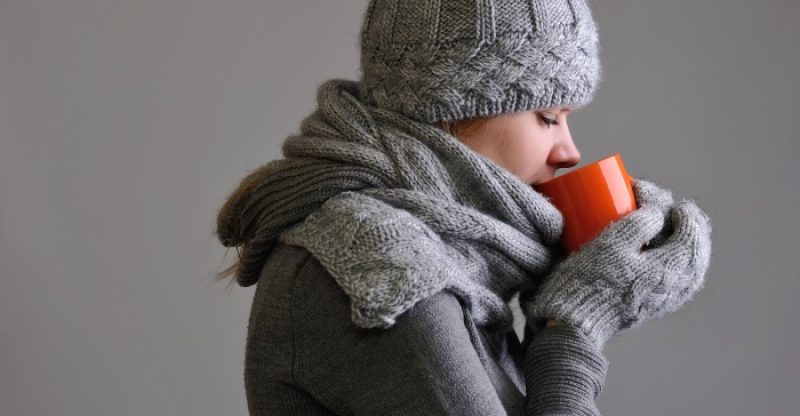Low Body Temperature Causes and Prevention Strategies
Hypothermia can happen to people of all ages, and in many different conditions, even indoors!
If you think you don’t have to worry about hypothermia because you don’t camp or hike, you are wrong.
Keep reading to learn more about how hypothermia can happen, even at temperatures above 40 degrees Fahrenheit; the dangers of hypothermia; and how to treat someone who has it.
We’ll even share with you tips on how to prevent hypothermia from occurring.
If you want to prevent your body temperature from dropping dangerously low, our guide will share with you the factors that put you at risk for developing hypothermia.
While many external factors can contribute to this condition, you may not realize that some of your own lifestyle choices could be putting you at risk, as well.
To treat and prevent hypothermia, we must first understand what hypothermia is, how it occurs, and what makes you more vulnerable to this dangerous drop in body temperature.
Understanding Low Body Temperature
What is hypothermia?
When your normal body temperature drops to a very low level, or usually anywhere below 95° F (35° C), you have hypothermia.
This dangerous dip in your internal body temperature can result in many minor and major health problems, and if it is not corrected, hypothermia can be fatal (1).
Hypothermia occurs when your body is losing heat faster than it can generate it.
While many think that hypothermia is just about feeling too cold, there are actually many ways this drop in temperature can manifest, and you may be hypothermic without even knowing it until it is too late.
Hypothermia can be mild to fatal, and the symptoms progress along a spectrum.
Once you know and are able to identify these symptoms, you can treat hypothermia and reverse this change.
Normal body temperature is around 98.6° F (37° C), but this can vary slightly from person to person.
Your normal body temperature naturally fluctuates slightly throughout the day, ranging anywhere from 97° F to 99° F (36°C to 37.2° C).
When your body temperature rises above 100.4° F (38° C), you are considered feverish, and a rise in body temperature comes with its own risks.
But hypothermia, or when your body temperature drops below 95° F (35° C), comes on slowly, and sometimes under conditions that don’t seem very extreme.
So, how do you know if you have hypothermia?
Symptoms of Hypothermia
Your body has natural temperature regulation mechanisms that keep your internal temperature steady.
When these mechanisms become overwhelmed, and they are no longer able to warm your body, your body temperature can drop dangerously low.
Your ability to produce heat is overpowered by the loss of heat that is occurring.
While mild hypothermia happens between 95-89° F, moderate cases dip down to 82° F, and severe hypothermia occurs when your body temperature drops below 82° F (2).
The symptoms of hypothermia at any level are gradual at onset, and slowly worsen if the hypothermia is left untreated.
As each new symptom appears over time, your hypothermia is gradually getting worse.
The most common progression of hypothermia symptoms in adults is (3):
- Feeling cold in face, hands, and feet.
- Shivering. Many older adults do not experience this symptom.
- Feeling tired.
- Speech that is slurred or mumbled.
- Drowsiness.
- Cognitive confusion, or thinking irrationally.
- Feeling irritable.
- Skin that feels cold on the abdomen and chest.
- Loss of balance and/or coordination.
- Movements that are jerking or stiff.
- Breathing becomes slow and shallow.
- Heartbeat becomes slow or irregular.
- Muscles become stiff and may tremble.
- Loss of consciousness.
- Heartbeat stops, causing death.
Hypothermia in infants progresses much more quickly, and many of the signs are not so visible.
Infants are particularly susceptible to hypothermia because they cannot regulate their own body temperature as effectively as adults.
They lose heat very quickly.
Signs that an infant has hypothermia include skin that is both cold to the touch and bright red, as well as an unusual lack of energy.
Older adults also have difficulty regulating body temperature, and thus are more prone to hypothermia.
Causes of Hypothermia
While it may seem obvious that exposure to extremely cold air or water can cause hypothermia, this is not always the case.
The conditions that can lead to hypothermia include (4):
- Indoor or outdoor temperatures that are cold;
- Being outside for extended periods;
- Insufficient clothing for the weather conditions;
- Wearing wet clothes for too long;
- Falling into the water, such as in a boating accident;
- A house that is too cold from lack of heat or too much air conditioning;
- Children, infants, or the elderly without sufficient shelter, heat, or clothing;
- Dehydration;
- Drinking or taking drugs that lead to increased heat loss from vasodilation;
- Not knowing the signs and symptoms of hypothermia.
It is possible to have hypothermia even if you are indoors.
This is especially true of vulnerable populations, such as the elderly and young children or infants.
Symptoms often develop very slowly, making it hard to detect.
In addition to the apparent causes of heat loss listed above, other factors can increase your risk of hypothermia.
These factors usually mean you have more trouble regulating your body temperature.
The risk factors for hypothermia include (5):
- Extreme fatigue. When you are exhausted, your tolerance for cold decreases.
- Age. The very old and the very young have difficulty regulating body temperature and are more susceptible to colder temperatures. While older adults and infants may not be able to communicate their symptoms, children often don’t recognize them.
- Mental health problems. Those with cognitive impairment, dementia, or other mental illnesses may lack the proper judgment to dress appropriately or avoid severe weather.
- Use of drugs or alcohol. While you may feel warm inside from taking drugs or drinking alcohol, your blood vessels expand, causing an increased loss of heat. Your judgment may also be impaired, which means you may not take the necessary precautions to prevent hypothermia.
- Medications for mental health. Many medications, such as antipsychotics, sedatives, and antidepressants, can disrupt the body’s natural ability to regulate its temperature.
- Some medical conditions. Several diseases and disorders can affect temperature regulation, including eating disorders such as anorexia, Parkinson’s disease, hypothyroidism, nerve damage or spinal cord injuries, severe infection – such as sepsis, or stroke.
Treating Hypothermia Conventionally
If you or someone you care for has hypothermia, you should call 911 to seek emergency medical help.
No person with hypothermia should be moved suddenly or jarred.
If possible, gently transport the person indoors or to a warmer area, and remove any wet clothing they may be wearing.
Provide them with dry layers, such as a blanket or warm coat.
Avoid raising their heart rate too suddenly, or doing anything that will significantly raise their body temperature very quickly.
Wait for help to arrive (6).
Depending on how severely the hypothermia has progressed, emergency responders may use a number of interventions that raise body temperature.
In addition to some of the more passive rewarming techniques we describe below, doctors may draw blood, warm it, and then return it to the body.
Warmed fluids may also be injected intravenously, which warms the body from the inside.
Medical professionals may administer warmed air through a mask or tube, or use warming irrigation to target specific organs, such as the lungs.
All of these are usually used in more severe cases of hypothermia.
Treating Hypothermia Naturally
Recovering from hypothermia, even severe cases, is possible when you receive prompt and appropriate care.
The conventional treatment for hypothermia shares many common strategies with more natural approaches.
In fact, most emergency responders and hospitals will utilize the following natural treatments for hypothermia, which are generally effective at managing mild to moderate cases of the condition.
You should use these techniques to warm passively the person with hypothermia while you wait for medical help to arrive.
Lay Flat with Gentle Care
Because the risk of cardiac arrhythmia is high with hypothermia, you want to avoid any sudden, jarring movements that may either cause the heart to stop or to beat irregularly.
Allow the person to lie flat on the ground, handling them gently.
Asking them to sit up or stand can cause ventricular fibrillation, so avoid these unless absolutely necessary.
If it is not possible to move the person indoors, protect them from the wind or wet weather as best as you can.
Protect especially their head and neck, and get them off the cold ground.
Gently remove any wet clothing, and replace it with blankets, coats, and other dry articles.
Perform CPR, if Needed
While the person is resting, monitor their breathing and heartbeat closely.
If they stop breathing, or their heart stops beating, begin administering CPR.
Hypothermia can make it challenging to detect respiration or a pulse, which is why you should continue to perform CPR until medical help arrives, or until you are confident that they are breathing on their own with a clear heartbeat.
If possible, continue efforts to warm the victim while CPR is being given.
Warm Them Gradually
Bringing the body temperature up too quickly can result in death or severe trauma, so be sure to use gradual measures to warm the body.
Suggestions for gradual rewarming include (7):
- Start by warming the torso and center of the body, including the head, neck, and chest. If you have one, use an electric blanket to provide consistent heat, but start at a low temperature.
- Your body temperature will be warmer than that of the person with hypothermia, so using skin-to-skin contact can also warm them gradually. Lie next to the hypothermic person under dry layers of blankets or other warming materials.
- Once their temperature begins to rise, continue to focus on keeping them dry and wrapped in warm clothing or blankets. Be sure the head and neck are covered, which will assist in warming the rest of the body.
Give Them a Warm Drink
Warm, sweet beverages are recommended, once the victim is able to drink and swallow normally.
If they are unconscious or unable to follow instructions, do not give them food or drink.
Drinking warm beverages can raise body temperature from the inside.
Sweet beverages offer a quick source of energy that the body can use to rewarm itself, too.
Sweetened tea, hot chocolate, warmed cider, and other beverages are perfect for those with mild to moderate hypothermia.
What to Avoid When Treating Hypothermia
When you are in a medical emergency, what you don’t do is as important as what you choose to do.
When caring for someone with hypothermia, knowing what to avoid can help save their life.
- Avoid raising the body temperature quickly. Avoid hot baths, heat lamps, or anything that will cause their body temperature to spike quickly.
- Do not warm the legs or arms. If you apply heat or massage the extremities, you can place stress on the heart that can lead to cardiac complications. Focus on warming the center mass of the body only.
- Do not give the person alcohol to drink. While this old wives’ tale is popular, alcohol can actually hinder rewarming.
- Don’t let them smoke. Smoking disrupts circulation, which is needed for rewarming, as well.
Preventing Hypothermia
If you want to ensure that you are not in a position to have to deal with hypothermia, then being prepared is the first step.
In addition to knowing the signs of hypothermia and how to treat it, there are other ways you can prepare yourself to handle conditions that can lead to hypothermia.
Here are some practical tips that can help you prevent hypothermia in yourself and those you love.
- If you are going to engage in outdoor activities during cold weather, make sure you are wearing the right clothing, have the proper nutrition, and are in adequate physical shape.
- Always hike or camp with a partner. This will help you both remain safe. Always inform others of where you plan to go, and when you will return.
- Dress in layers that are made from quick-drying fabrics, avoiding cotton and other knits that soak up moisture. Carry extra clothes, food, and water with you at all times.
- Wet weather rapidly increases heat loss. Make sure you have adequate gear to keep you warm and dry, in case of inclement weather.
- Always keep homes heated to at least 70° F (21° C) if there are young children or elderly people in the house. This is especially true of bedrooms at night.
- When you start to notice signs or symptoms of hypothermia in yourself or someone else, get help immediately.
Other Cold-Induced Injuries
Hypothermia is not the only cold-induced condition.
If you spend time outdoors during the colder months, you are susceptible to a number of other health problems that range from mild to severe.
Here, we describe a few major issues to watch out for.
Frozen Tissue
When your body tissue freezes, you develop ice crystals inside your tissue’s cells.
These crystals can result in tissue damage, especially when the area is rubbed.
Depending on the temperature, time of exposure, and other factors, frozen tissue ranges in severity from a mild cold response to deep frostbite.
Frozen tissue can result in permanent damage, loss of tissue, and even death, in some cases.
Tissues in your extremities that have lots of surface area but not a lot of blood flow are particularly susceptible.
These include your toes, fingers, nose, and ears.
Tissues begin freezing below 28° F.
Tissue freezing begins with a cold response that includes reduced circulation, pale skin, and possibly numbness in the area.
If left untreated, this can progress to frostnip, which is when the very top layers of the skin freeze.
Frostnip is usually reversible if treated quickly.
While the outside of the skin will appear hard and even waxy, the deeper layers remain soft.
To treat frostnip, warm the area by placing it next to your warm body, or by blowing warmed air over it.
Frostnip can progress into surface or deep frostbite, which means even deeper layers of skin and muscle freeze.
Skin will appear white and be harder to the touch, and deep frostbite can actually affect the flesh all the way to the bone.
This level of frostbite is difficult to reverse without some damage.
Frostbite should be treated by a medical professional, in order to preserve as much tissue as possible and prevent further injury.
Precautions
If you or someone with you is suffering from hypothermia, call 911 immediately.
If you are able to take the person’s temperature, be sure that it is over 95° F.
If it is not, you definitely need to seek medical help.
In infants, a temperature below 97° F is cause for immediate concern and action.
Hypothermia is a dangerous medical condition that can be treated if caught quickly.
Prompt care is necessary for a full recovery.
Those who are most susceptible to hypothermia are the very young, the very old, those who are homeless, those who are exposed to cold temperatures for extended periods, and the mentally ill.
If you live with a young child or an older adult, be sure to keep indoor temperatures over 70° F, to ensure their safety and comfort.
If you have hypothermia, you will likely experience shivering, fatigue, slurred speech, and drowsiness first.
If you progress into more severe levels of hypothermia, you can also experience clumsiness, confusion, and changes in your breathing and heart rate.
Always dress appropriately for cold temperatures, and be sure you are able to stay dry in inclement weather when participating in outdoor activities.
Remove wet clothing as quickly as possible.
FDA Compliance
The information on this website has not been evaluated by the Food & Drug Administration or any other medical body. We do not aim to diagnose, treat, cure or prevent any illness or disease. Information is shared for educational purposes only. You must consult your doctor before acting on any content on this website, especially if you are pregnant, nursing, taking medication, or have a medical condition.
HOW WOULD YOU RATE THIS ARTICLE?






